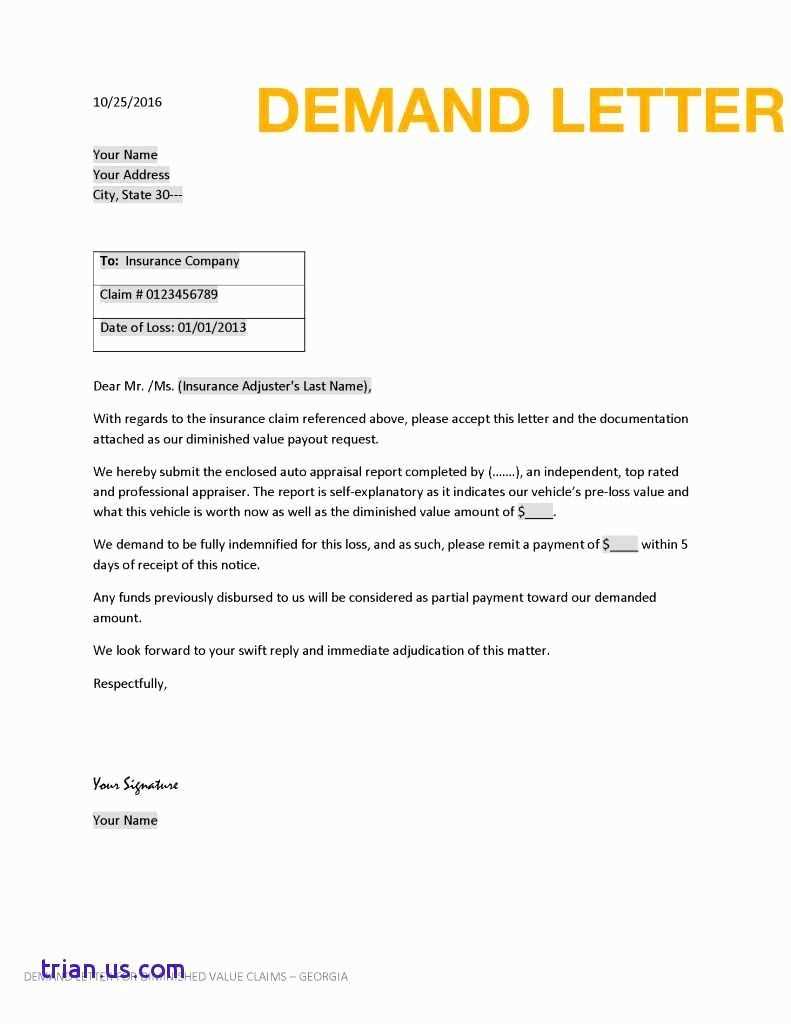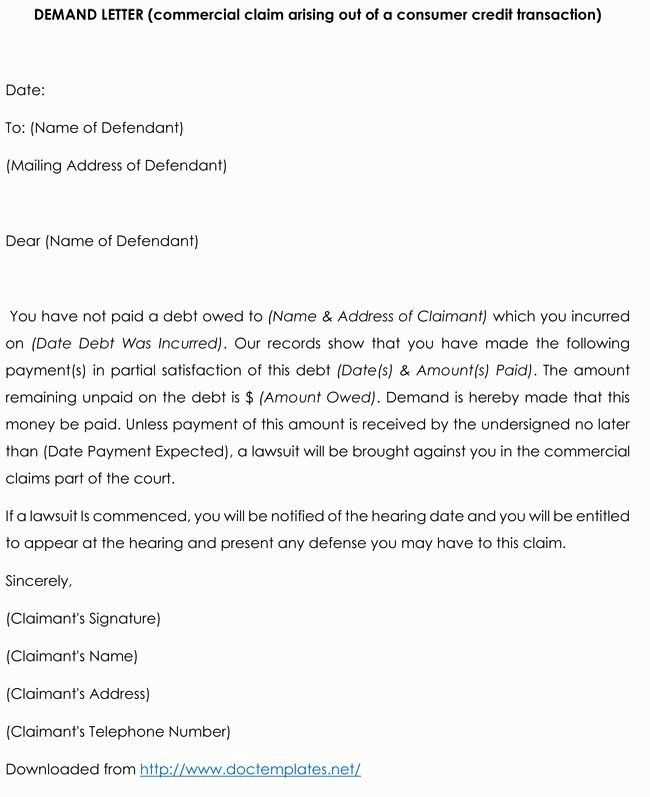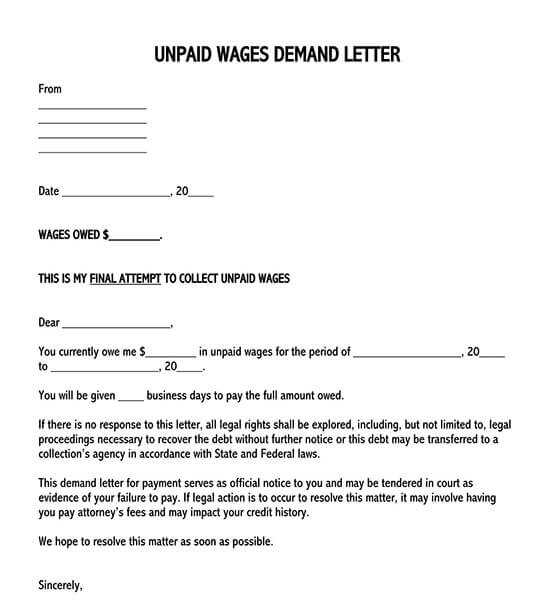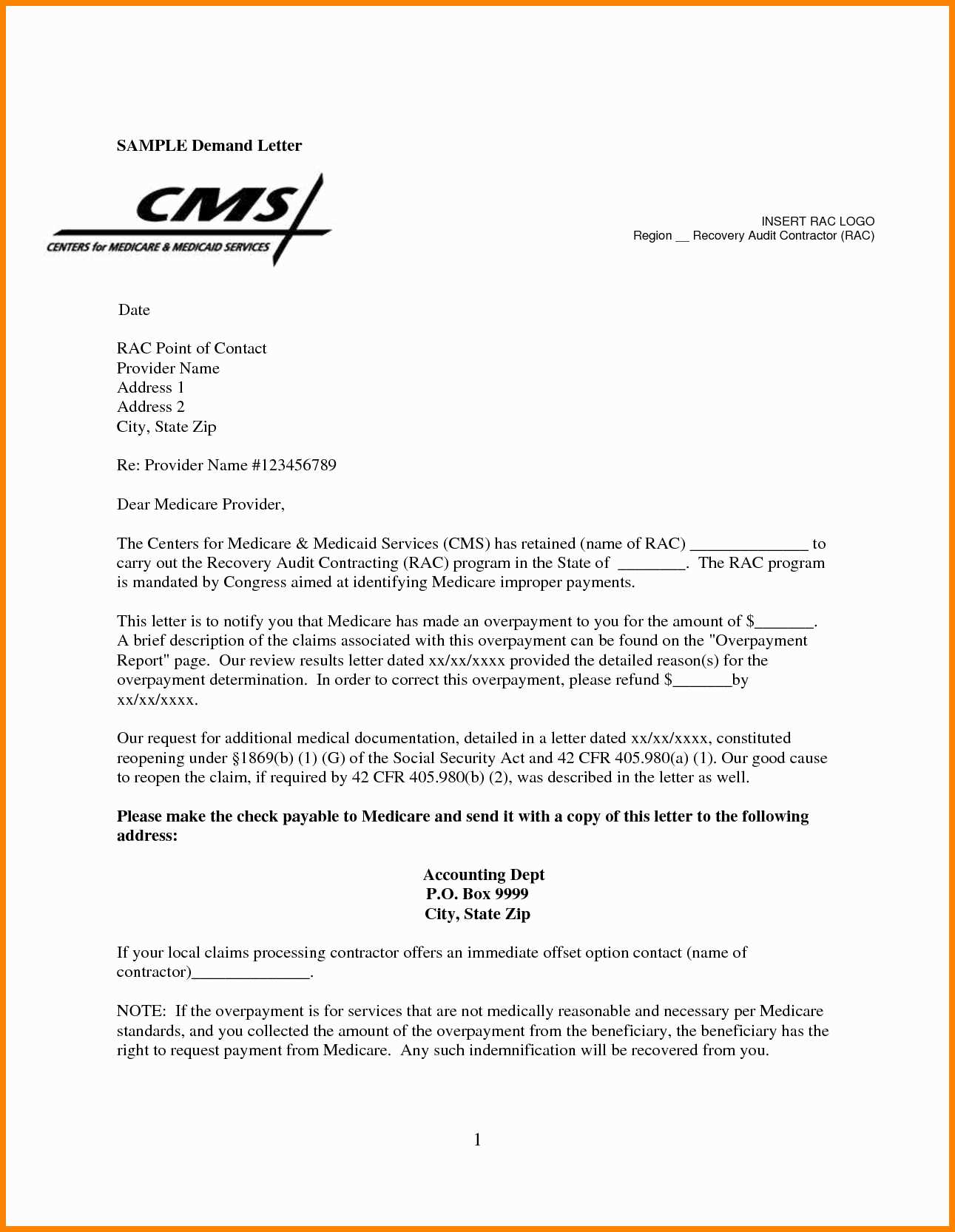Effective Demand Letter Template for Small Claims

When disputes arise over unpaid debts or unresolved issues, the first step towards resolution often involves formally communicating your demands. Crafting a clear and concise message can encourage the recipient to take action and settle the matter without further escalation. The process requires careful attention to detail, as the tone, content, and clarity of your communication play a critical role in its effectiveness.
Understanding the importance of a well-crafted communication is crucial. A well-written document can serve as a strong starting point in reaching an agreement, while poorly constructed requests can lead to misunderstandings or even legal complications. Whether you’re seeking financial compensation or addressing a contractual breach, taking the right approach can make a significant difference in achieving a favorable outcome.
In this guide, we’ll walk you through the essential components of an effective communication for resolving disputes, offering you a step-by-step process that helps protect your interests and increase your chances of success.
Why You Need a Formal Request

In situations where disagreements arise over unpaid balances or unresolved issues, initiating a formal request can be an effective way to address the matter before it escalates. A clear, written communication lays the groundwork for a resolution by outlining the problem, stating what is expected, and setting a deadline for action. This process is often the first step in resolving conflicts without involving courts or other formal legal procedures.
Having a documented record of your request is essential. It serves as proof that you’ve made an attempt to settle the matter amicably, which could be beneficial if the situation eventually requires legal intervention. This communication can act as a formal notice, showing that you are serious about resolving the issue.
By taking the time to draft a clear and professional request, you not only increase your chances of a swift resolution but also demonstrate your commitment to handling the situation in a structured and fair manner.
Understanding the Legal Process for Resolving Disputes

When conflicts over financial obligations or agreements cannot be settled informally, taking the matter to court can be a practical solution. The legal system provides a streamlined process for individuals to resolve disputes without the need for costly attorneys or lengthy proceedings. This process is designed to be accessible and efficient for those seeking to recover owed funds or address breaches in contracts.
Filing a Case in Court
Before initiating the process, it’s important to understand the eligibility requirements for bringing a case to court. Typically, cases involving smaller amounts of money are handled in a simpler system designed for quicker resolutions. The individual filing the case, known as the plaintiff, will need to provide necessary documentation and a clear statement of their claim.
The Role of the Court and Settlement Opportunities
Once a case is filed, the court will review the information and may schedule a hearing. The defendant, or the party being sued, will also have the opportunity to present their side of the case. Many cases are resolved before reaching a formal trial through negotiations or mediation, which allows both parties to settle the matter without judicial intervention.
Understanding this process helps you approach the situation with greater confidence, knowing what to expect and how to best prepare for the next steps in resolving the dispute.
Key Elements of a Formal Request
When addressing an unresolved issue, it is important to include specific information to ensure clarity and increase the chances of a positive outcome. A well-structured written communication highlights the most relevant details and sets clear expectations for resolution. Including all necessary components in your document will help you communicate your position effectively and encourage prompt action from the recipient.
Essential Information to Include
- Clear Identification of Parties: Ensure both you and the recipient are identified with full names and contact details.
- Overview of the Situation: Briefly explain the circumstances that led to the dispute, providing key dates and facts.
- Specific Request: State clearly what you expect the other party to do, such as paying a debt or fulfilling a contract.
- Deadline for Action: Set a reasonable time frame for the recipient to respond or resolve the issue.
- Consequences of Non-Compliance: Mention any potential legal or formal actions you may take if the matter is not addressed.
Why Each Element Matters
Each component plays a crucial role in establishing a clear and effective communication that increases the likelihood of reaching a resolution. By providing precise details and setting clear expectations, you demonstrate that you are serious and organized, which can motivate the recipient to take action swiftly.
Common Mistakes to Avoid in Written Requests
When attempting to resolve a dispute through written communication, it’s crucial to avoid common errors that can weaken your position or cause confusion. These mistakes can lead to delays, misunderstandings, or even legal complications. Understanding and addressing these issues beforehand can help ensure that your message is clear, professional, and effective.
Typical Mistakes to Watch For
- Vague Language: Using unclear or overly general terms can lead to confusion and may hinder your chances of a quick resolution.
- Failure to Provide Evidence: Not including relevant documentation or proof of the issue can make it harder to support your claim or request.
- Overly Aggressive Tone: Using a harsh or hostile tone can alienate the recipient and reduce the likelihood of a positive outcome.
- Missing Key Information: Leaving out critical details, such as the date or amount owed, can cause delays and complicate the process.
- Unrealistic Demands: Setting unreasonable expectations or deadlines can undermine the credibility of your request.
How to Avoid These Pitfalls

By being clear, concise, and professional in your communication, you can avoid these common mistakes. It’s important to provide all necessary details, keep the tone respectful, and ensure your request is reasonable and well-supported. Taking the time to review your communication before sending it can make all the difference in achieving a favorable outcome.
How to Customize Your Request
Personalizing your written communication is essential to ensure it accurately reflects your situation and needs. A generic message may not be as effective as one tailored to address the specifics of the dispute. Customizing your document allows you to make it relevant to your unique circumstances and increases the likelihood of receiving a timely response.
Key Customization Steps
When adjusting your document, focus on the following key areas:
| Section | Customization Tips |
|---|---|
| Recipient Information | Ensure the correct name, address, and contact details for the person you are addressing. |
| Background Information | Provide clear details of the situation, including dates, agreements, and any prior communication. |
| Requested Action | Clearly outline what you expect from the recipient, whether it’s payment or fulfilling an obligation. |
| Timeframe | Set a reasonable deadline for response, considering the complexity of the issue. |
| Consequences | Specify the potential steps you may take if the issue remains unresolved, including legal action if necessary. |
Why Customization Matters
Personalizing your request ensures that it addresses the specifics of your situation, making it more likely that the recipient will take it seriously. By adapting your message to reflect the unique details of your case, you demonstrate your commitment to resolving the issue and show that you’ve taken the time to craft an effective, targeted communication.
Next Steps After Sending the Communication
Once you have sent your formal request, it’s important to stay proactive and monitor the situation closely. While you may have clearly outlined your expectations, the next steps involve following up, evaluating the response, and determining whether further action is needed. Having a clear plan in place will help you navigate this stage with confidence and ensure you are prepared for any outcome.
Wait for the Response
After sending your communication, give the recipient a reasonable amount of time to respond. Most situations require a few days or weeks for the other party to review the information and take action. Be patient but stay vigilant, noting the deadline you set for a response. If no reply is received by the agreed date, it may be time to take further action.
Evaluate the Response and Plan Accordingly
If the recipient responds positively, assess whether their proposed solution satisfies your request. If it does, proceed with finalizing the matter. However, if the response is unsatisfactory or there is no response at all, you may need to consider additional steps, such as legal action or mediation. The next move will depend on the nature of the dispute and your specific objectives.